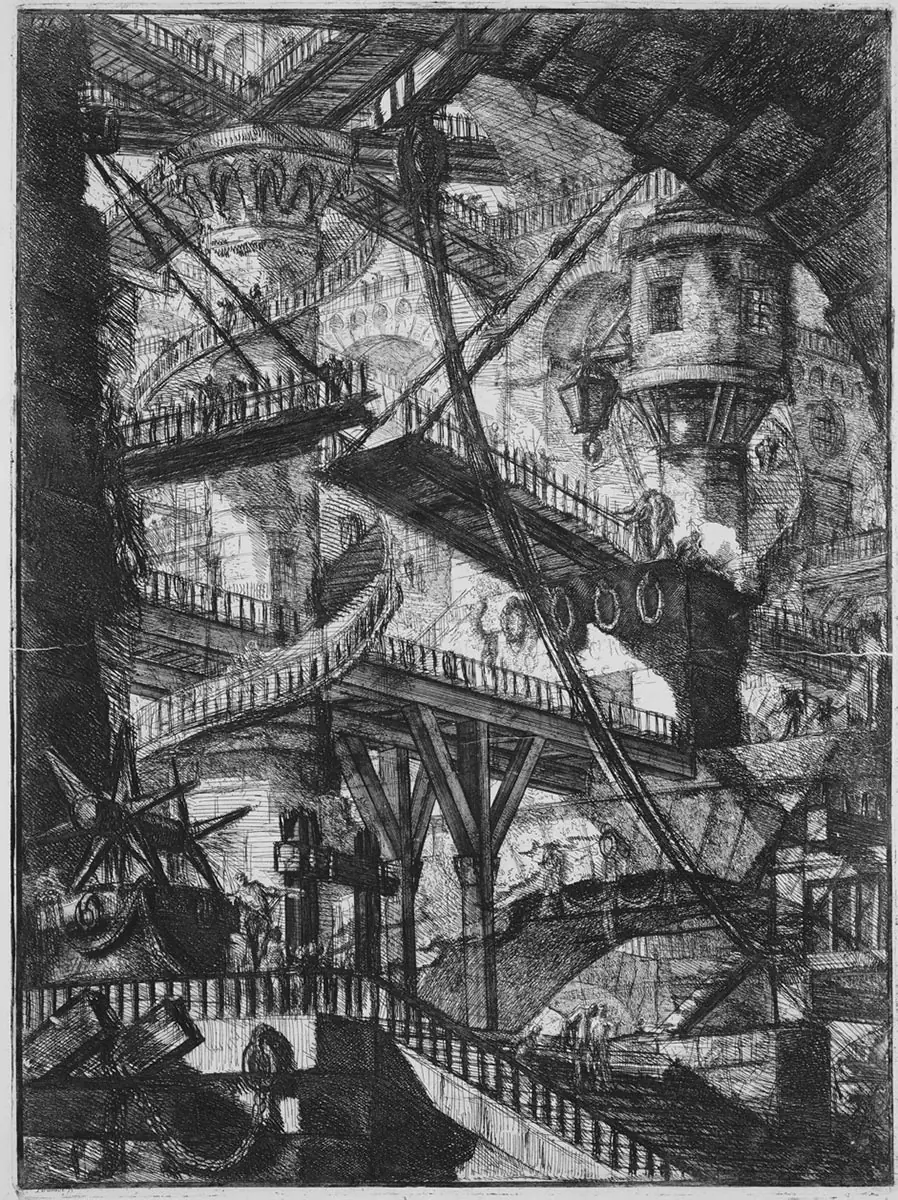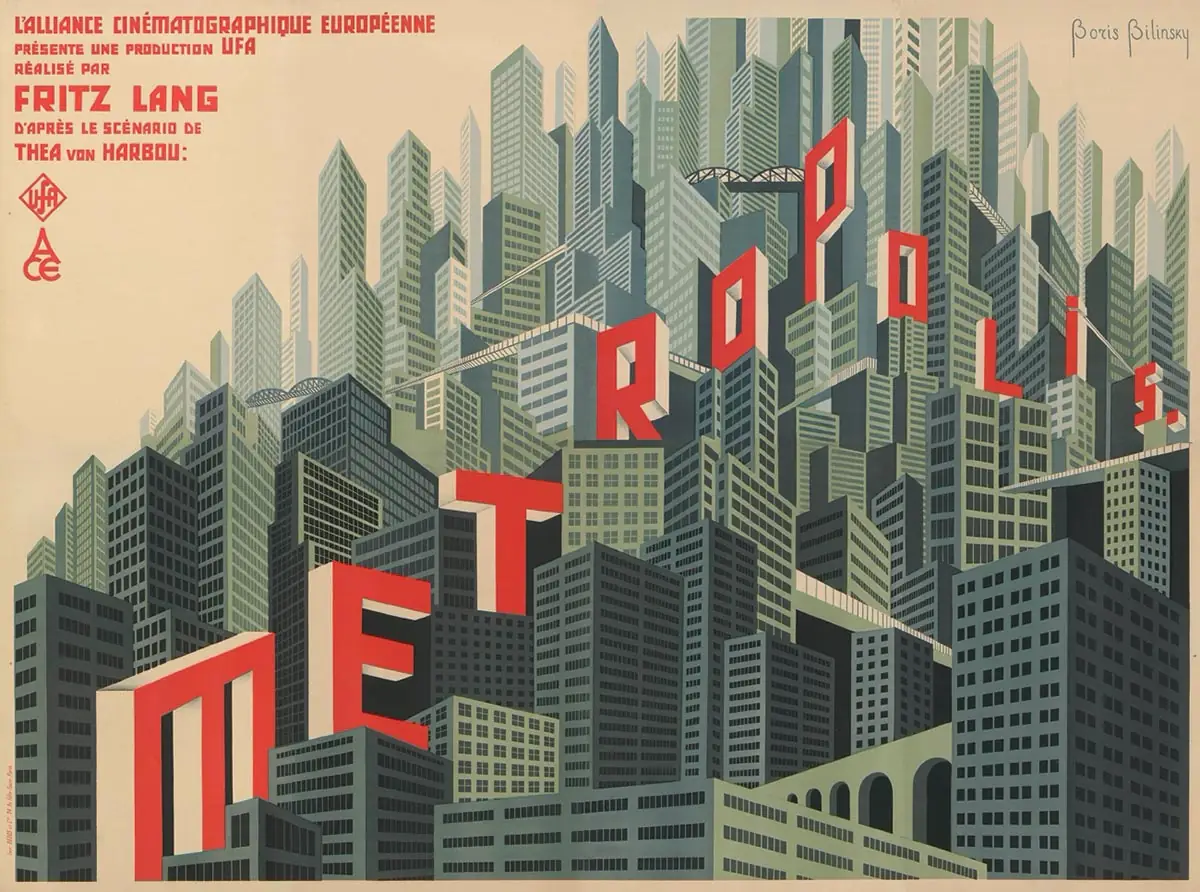Giovanni Battista Piranesi (1720–78) referred to himself as an architetto—an architect—but it was through his talent for etching, not his built work, that he would come to influence much of the modern world. This was thanks in no small part to his audience, the legions of Western Europeans who voyaged to Rome on the “Grand Tour.” To this moneyed and educated clientele, Piranesi sold thousands of prints—some depicting visions of antiquity, some grand urban vistas, and some, most famously, dystopian imagined prisons replete with torture devices. In these disquieting images, history and fiction collide, creating a dreamlike realm that would continue to transfix audiences for centuries to come.
Victor Plahte Tschudi’s Piranesi and the Modern Age says little about Piranesi’s life; a number of biographies have already been written. Tschudi’s subject is, rather, his afterlife—the innumerable ways in which his works have shaped generations of writers, filmmakers, photographers, historians, and, of course, architects, with an emphasis on the years after 1900. Among the book’s virtues is that it is also a work of historiography: it traces how a series of interpretations of Piranesi, advanced by different figures to serve sometimes opposing agendas, have taken hold over the past century, each fundamentally reframing his historical importance. If Piranesi’s works are “obviously unchanging,” Tschudi writes, “the narratives in which these components make sense are constantly reinvented.”

Giovanni Battista Piranesi, plate VII, The Drawbridge, from Carceri d’invenzione, second edition, 1761. Courtesy Detroit Institute of Arts / MIT Press, click to enlarge.
Piranesi and the Modern Age is a work of ambitious breadth, rare in an age when many scholars prefer to develop narrow specialties rather than tackle broad themes. In brisk, lucid chapters divided largely by discipline and illustrated generously, Tschudi takes us through Romantic literature, the development of film theory from the Soviet Union to Walt Disney, the early history of MoMA, and the fierce architectural debates of the 20th century, in each case demonstrating how Piranesi’s prints—most often his prisons, the Carceri d’invenzione—played ever-changing roles. Le Corbusier, for example, developed something of a love-hate relationship with Piranesi, writing in 1915 that his work was “horrible, ugly, and idiotic,” but later going so far as to hang a Piranesi print behind his desk. In the 1950s, Vincent Scully argued that Piranesian space represented nothing less than the critical precedent for Le Corbusier’s architecture. And, by the 1970s, Piranesi was claimed as something of a forebear both by champions of historicism like Léon Krier and conceptual architects like Peter Eisenman.
Through these encounters and many others, Tschudi suggests, Piranesi has come to define the very idea of modernity, and modernity has in turn come to define Piranesi. This bold but compelling claim perhaps reflects the influence of the historian Manfredo Tafuri, cited often here, who interpreted Piranesi as the subversive foundational figure for the avant-garde.

The French poster for the film Metropolis (1927), designed by Boris Bilinsky, takes inspiration from a Piranesi etching that depicts ancient Rome. Image © Scala, courtesy MIT Press
The sheer volume of research upon which this study rests is impressive. Beyond consulting published and archival sources, Tschudi also conducted interviews with living figures including Eisenman, Bernard Tschumi, and Rem Koolhaas, all of whom testify to Piranesi’s importance for their own thinking. Tschumi, we learn, considers his famed Parc de la Villette (1982–98) to be Piranesian, and Eisenman has a print of Piranesi’s fictionalized urban plan of the Campo Marzio hanging on his bedroom wall.
Nonetheless, as Tschudi acknowledges, producing such a broad study means taking the risk of occasionally getting something wrong. For instance Tschudi’s claim, made with reference to Scully, that Louis I. Kahn derived “every one of the shapes” in the plan of his National Assembly Building of Bangladesh from the Campo Marzio is overstated at best. Kahn loved the Campo Marzio—he, too, had a copy of it hanging on his wall—but it was in channeling a vision of modernity as somber and ruinous, not in copying compositions, that Kahn referenced Piranesi.
Such off notes hardly dent the book’s overall persuasiveness. Even its sharp design, by Mathias Clottu, subtly advances Tschudi’s ideas. The deep gray fabric of its cover recalls the dark, textured hatching of Piranesi prints; into this is inscribed a title rendered in Futura, among the typefaces most associated with Modernism. Piranesi and the modern, this volume suggests, are inseparable.
There is an intriguing flip side to Tschudi’s argument. A Piranesi who has become so inflated as to define an entire era becomes less a historical figure than a cipher: in this tumble down the rabbit hole of modernity, the reader encounters so many different Piranesis that the very name begins to lose its meaning. All that is left are the prints themselves, designed from the very beginning to draw in travelers eager to discover the secrets of an imagined Rome. “Piranesi,” Tschudi writes, “is a patron of pasts that never were and futures that never will be.”






Post a comment to this article
Report Abusive Comment